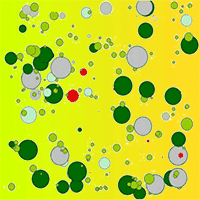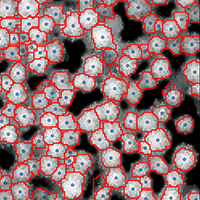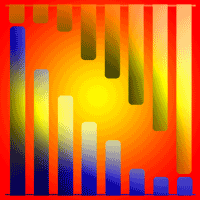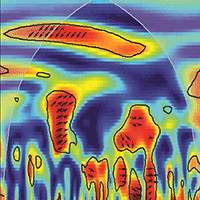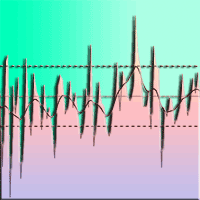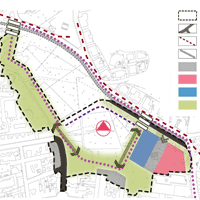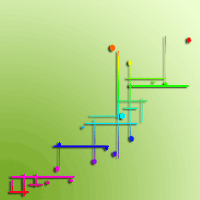
Multi-aged micro-neighborhood patches challenge the forest cycle model in primeval European beech
Eric K Zenner (1) , Jerilynn E Peck (1), Volodymyr Trotsiuk (2-3-4)
iForest - Biogeosciences and Forestry, Volume 13, Issue 3, Pages 209-214 (2020)
doi: https://doi.org/10.3832/ifor3309-013
Published: Jun 06, 2020 - Copyright © 2020 SISEF
Short Communications
Abstract
As currently framed, the forest cycle model that underlies close-to-nature management in temperate beech forests throughout the globe specifies an orderly sequence of temporal development within even-aged patches comprising the forest mosaic. Although this model has been widely applied to European beech (Fagus sylvatica L.) forests, the underlying assumptions of disturbance-induced even-agedness (i.e., within-patch age homogeneity) and competition-induced size differentiation (i.e., within-patch size heterogeneity) have not been tested in natural beech forests due to prohibitions on tree coring in primeval forest reserves. In a rare and unprecedented test dataset of spatially explicit tree ages in an old-growth European beech forest, we employed triangulated irregular networks of Delaunay triangles to objectively identify natural tree neighborhoods to determine if neighboring (i.e., within-patch) trees were even- or, at most, two-aged. Age differences among neighboring trees (summarized in 25-yr age classes) were rarely <25 yrs and mostly >50 yrs, while the few "even-aged" patches were very small (100 m2) and relatively young (<150 yrs). In this first assessment of the assumptions underlying the forest cycle model in European beech, we observed neither the even-aged cohorts expected for disturbance-induced patches in different phases of development, nor the size differentiation among similarly aged trees that should arise from the neighborhood dynamics of competition, self-thinning, and growth. The lack of patches indicating demographic turnover is fundamentally inconsistent with the forest cycle model as it is currently framed. We call for further exploration of spatially-explicit tree age datasets to determine the generality of these observations.
Keywords
Age Reconstruction, Carpathians, Dendrochronology, Development Stage, Forest Cycle, Stand Development, Structure, Triangulated Irregular Network (TIN)
Authors’ Info
Authors’ address
Jerilynn E Peck
Department of Ecosystem Science and Management, The Pennsylvania State University, University Park, PA, 16802 (USA)
Faculty of Forestry and Wood Sciences, Czech University of Life Sciences Prague, Kamycka 129, Prague (Czech Republic)
Swiss Federal Institute for Forest, Snow and Landscape Research WSL, Birmensdorf (Switzerland)
Institute of Agricultural Sciences, ETH Zurich, Zurich (Switzerland)
Corresponding author
Paper Info
Citation
Zenner EK, Peck JE, Trotsiuk V (2020). Multi-aged micro-neighborhood patches challenge the forest cycle model in primeval European beech. iForest 13: 209-214. - doi: 10.3832/ifor3309-013
Academic Editor
Jesus Julio Camarero
Paper history
Received: Dec 03, 2019
Accepted: Apr 10, 2020
First online: Jun 06, 2020
Publication Date: Jun 30, 2020
Publication Time: 1.90 months
Copyright Information
© SISEF - The Italian Society of Silviculture and Forest Ecology 2020
Open Access
This article is distributed under the terms of the Creative Commons Attribution-Non Commercial 4.0 International (https://creativecommons.org/licenses/by-nc/4.0/), which permits unrestricted use, distribution, and reproduction in any medium, provided you give appropriate credit to the original author(s) and the source, provide a link to the Creative Commons license, and indicate if changes were made.
Web Metrics
Breakdown by View Type
Article Usage
Total Article Views: 39594
(from publication date up to now)
Breakdown by View Type
HTML Page Views: 32994
Abstract Page Views: 4017
PDF Downloads: 1924
Citation/Reference Downloads: 6
XML Downloads: 653
Web Metrics
Days since publication: 2034
Overall contacts: 39594
Avg. contacts per week: 136.26
Citation Metrics
Article Citations
Article citations are based on data periodically collected from the Clarivate Web of Science web site
(last update: Mar 2025)
Total number of cites (since 2020): 4
Average cites per year: 0.67
Publication Metrics
by Dimensions ©
Articles citing this article
List of the papers citing this article based on CrossRef Cited-by.
References
The Uholka-Shrokyi Luh protected massif - an overview. In: “Inventory of the Largest Primeval Beech Forest in Europe - A Swiss-Ukrainian Scientific Adventure” (Commarmot B, Brändli U-B, Hamor F, Lavnyy V eds). Swiss Federal Research Institute WSL, Birmensdorf, Ukrainian National Forestry University, L’viv, Carpathian Biosphere Reserve, Rakhiv, Ukraine, pp. 13-17.
Gscholar
The dictionary of forestry. Society of American Foresters, Bethesda, USA, pp. 210.
Gscholar
Die Urwälder der Westkarpaten [The primeval forests of the Western Carpathians]. Gustav Fischer Verlag, Stuttgart, Germany, pp. 310. [in German]
Gscholar
Uber Zweck und Methoden der Struktur-und Zuwachsanalyse von Urwäldern [On the purpose and methods of structure and growth analysis in primeval forests]. Schweizerische Zeitschrift für Forstwesen 110: 111-124. [in German]
Gscholar
Bestimmung der Waldentwicklungsphasen und der Texturdiversität in Naturwäldern [Determination of forest development phases and the textural diversity of natural forests]. Allgemeine Forst- und Jagdzeitung 170: 203-211. [in German]
Gscholar
The mosaic-cycle concept of ecosystems an overview. In: “The mosaic-cycle concept of ecosystems” (Remmert H ed). Springer, Berlin, Heidelberg, Germany, pp. 1-21.
Gscholar
Gap disturbance patterns of a Fagus sylvatica virgin forest remnant in the mountain vegetation belt of Slovenia. Forest Snow and Landscape Research 79: 69-80.
Gscholar


